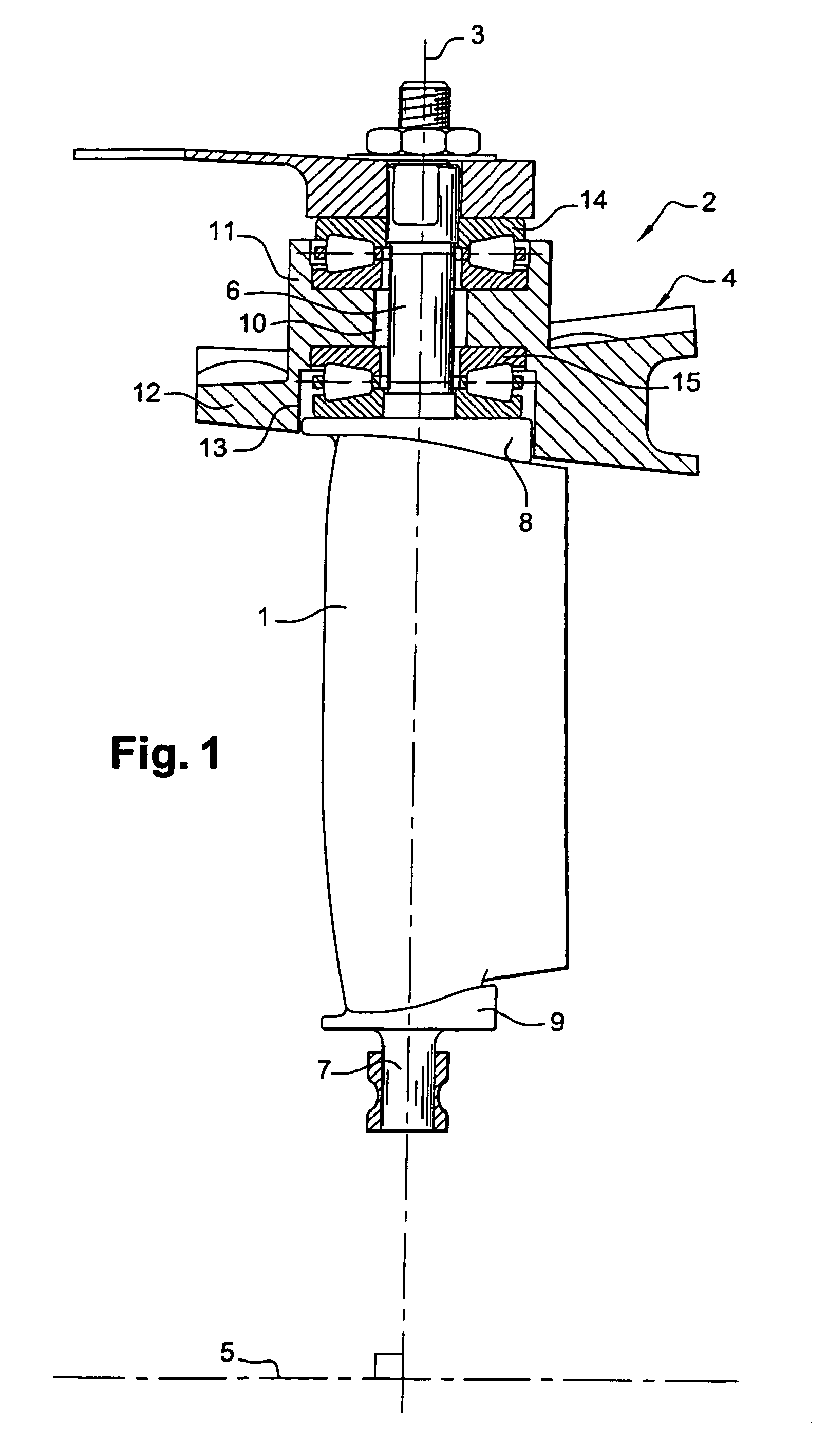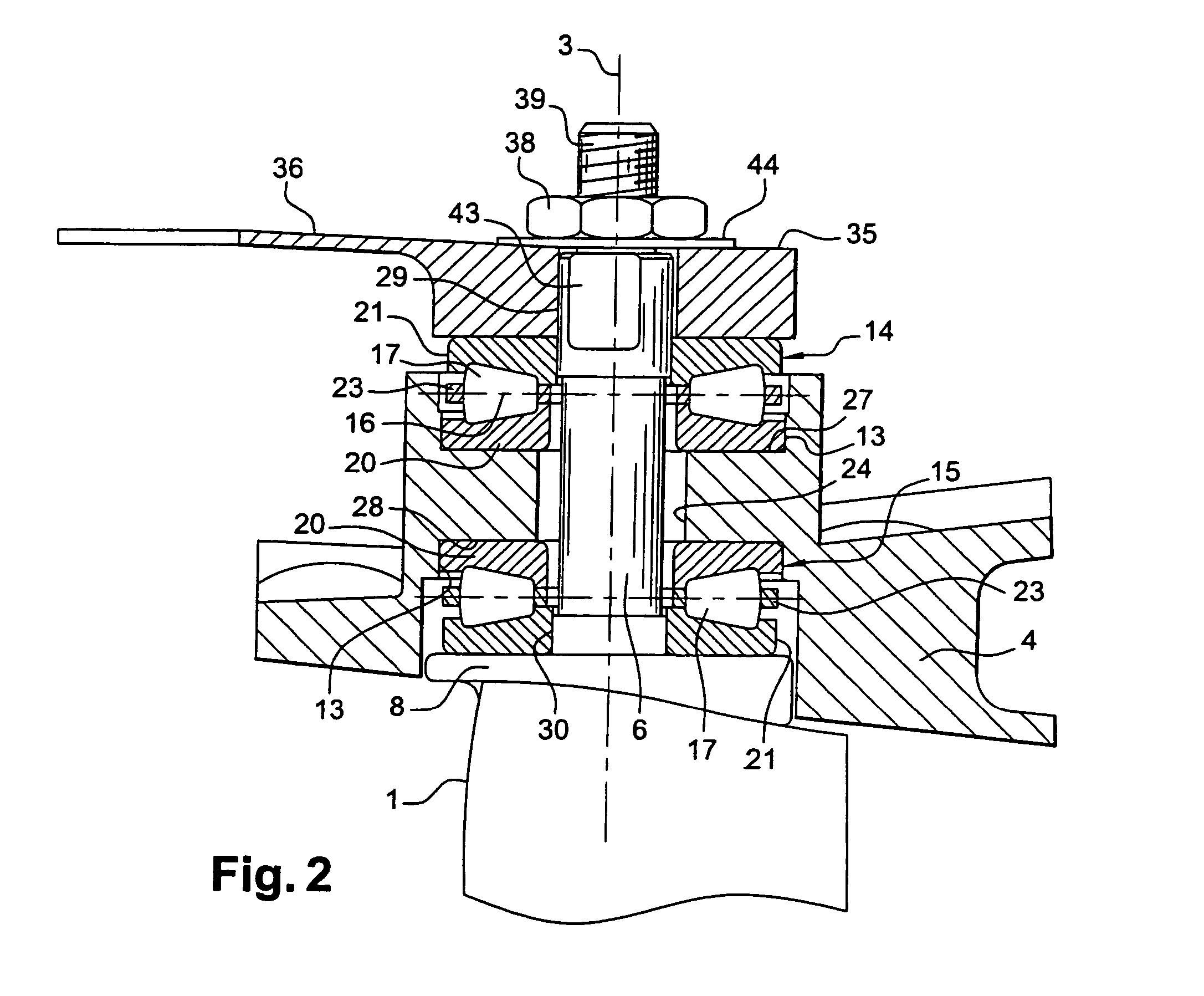Method of guiding a blade having a variable pitch angle
a technology of guiding blades and bearings, applied in the direction of machines/engines, mechanical equipment, liquid fuel engines, etc., can solve the problems of insufficient service life, insufficient load of bearings for guiding blades, and inability to provide complete satisfaction, so as to reduce the maintenance of the means for guiding, avoid premature wear of rolling elements, and reduce friction
- Summary
- Abstract
- Description
- Claims
- Application Information
AI Technical Summary
Benefits of technology
Problems solved by technology
Method used
Image
Examples
Embodiment Construction
[0024]FIGS. 1 and 2 show a variable-pitch blade 1 in a compressor 2 of a turbomachine, the blade being capable of pivoting about its axis 3 relative to the stator 4 of the turbomachine. The axis 3 of the blade extends perpendicularly or otherwise relative to the axis of rotation 5 of the rotor (not shown) of the turbomachine. Two cylindrical pivots 6, 7 extend from the ends 8, 9 of the blade 1 along its pivot axis 3. The top pivot is formed by a cylindrical axial shank 6 of the blade 1 and is mounted in a cylindrical housing 10 formed in a thickening 11 of the stator 4, and the bottom pivot 7 extends from the other end 9 of the blade and is received in a cylindrical housing of a support (not shown) beside the rotor of the turbomachine. The axial shank 6 is guided in the cylindrical housing 10 of the stator 4 by a guide device of the invention. The guide device for the bottom pivot 7 is not shown in FIG. 1, such a device is not always needed to allow the blade 1 to pivot, and it may ...
PUM
 Login to View More
Login to View More Abstract
Description
Claims
Application Information
 Login to View More
Login to View More - R&D
- Intellectual Property
- Life Sciences
- Materials
- Tech Scout
- Unparalleled Data Quality
- Higher Quality Content
- 60% Fewer Hallucinations
Browse by: Latest US Patents, China's latest patents, Technical Efficacy Thesaurus, Application Domain, Technology Topic, Popular Technical Reports.
© 2025 PatSnap. All rights reserved.Legal|Privacy policy|Modern Slavery Act Transparency Statement|Sitemap|About US| Contact US: help@patsnap.com



